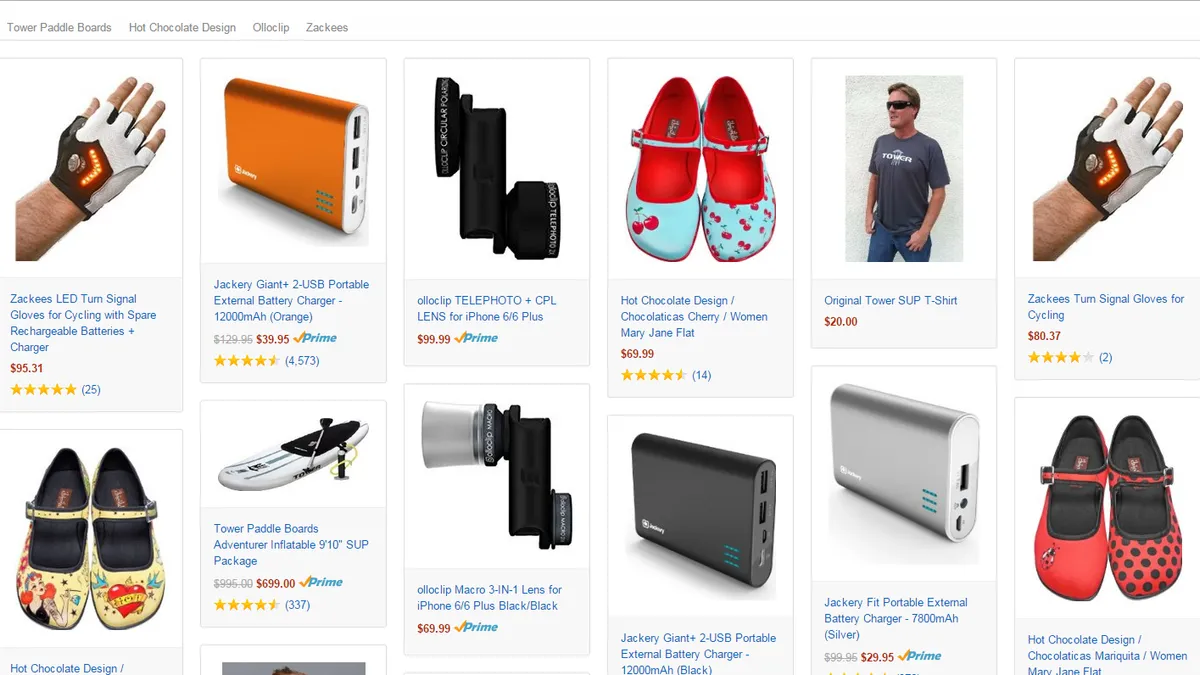Dive Brief:
-
Reports of the death of brick-and-mortar are, once again, greatly exaggerated, according to a report from L2 entitled “Death of PurePlay Retail” conducted with Simon Property Group. Showrooming was one common reason for previous such reports, maintains L2, and continued reports of e-commerce growth are fueling the latest notion that physical stores are failing to compete.
-
Huge valuations of pure-play retail ventures like now-floundering flash sales sites (Gilt Groupe, Zulily) are not panning out, just as e-commerce ventures of the nineties dot-com boom failed. “The same challenges that plagued Pets.com and others persist two decades later: unsustainable customer acquisition and shipping costs, and a discount-driven environment that erodes already razor-thin margins. Hitting 'scale' requires cheap capital to fund growth, in the absence of profitability.”
-
Yet physical stores, and their much maligned partners in retail—malls—at least at the high end continue to experience growth in sales per square foot, the report says. According to the report, while internet darlings like Warby Parker and Casper Mattress are often thought of as examples of the success of pure-play, they’re likely to see entrenched success by opening stores. In fact, many such pure-play ventures are well aware of the need for brick-and-mortar; two-thirds of venture capital-backed e-retailers raised funds “with the explicit purpose of building stores,” the report says.
Dive Insight:
Retail brick-and-mortar is not going away, that seems obvious. But L2 is going further and saying, in essence, that there ultimately is no such thing as “pure-play e-commerce” because successful e-retailers eventually open physical stores. Even Amazon, of course, did so last year, although the jury’s still out as to why.
Amazon aside, L2 notes that there’s little that is analogous online to the potential of the walk-in traffic that helps boost physical store sales.
In fact, many e-commerce retailers may be blithely unaware of some more subtle advantages that brick-and-mortar retailers enjoy. It’s related to that “touch and feel,” but also has to do with emotional reactions we humans have in a physical environment, web psychologist Liraz Margalit of digital “customer experience” solutions startup Clicktale, told Retail Dive last year. Though there are ways e-retailers can also "second that emotion," she says.
“The online store needs to provide us with the same kind of experience, to create these feelings we have in physical stores,” Margalit told Retail Dive. “When you go to buy something, it’s not always a rational decision. It’s an emotional one. But sitting at our screens is a more ‘rational’ environment than being in a store.”
Still, e-commerce is “ultimately a winner-take-all game, dominated by a handful of stalwarts with huge operating and marketing budgets.” Just four retailers—Amazon, Apple, Walmart, and Staples—accounted for more than 40% of U.S. e-commerce sales last year, and just 50 accounted for almost 75%.
“Notably, excluding Amazon, pureplay e-commerce retail and software companies made up just a fraction of sales, with the lion’s share captured by omnichannel retailers,” according to the report. And Amazon itself continues to struggle with profitability, and depends on its cloud services to back up its e-commerce performance.
Scale is another challenge for e-commerce retailers, L2 says, and that calls into question newcomer Jet’s prospects. That retailer is spending $5 million each week on advertising, translating to $100 for each new customer acquisition.
“In November 2015, Jet.com—already sitting on $225 million in funding—raised another $550 million to avoid running out of money before the end of 2015,” according to the report. “The vast amount of capital required to scale a customer base in the commoditized e-tailing landscape has proven to be unsustainable for even the most well-funded players.”













